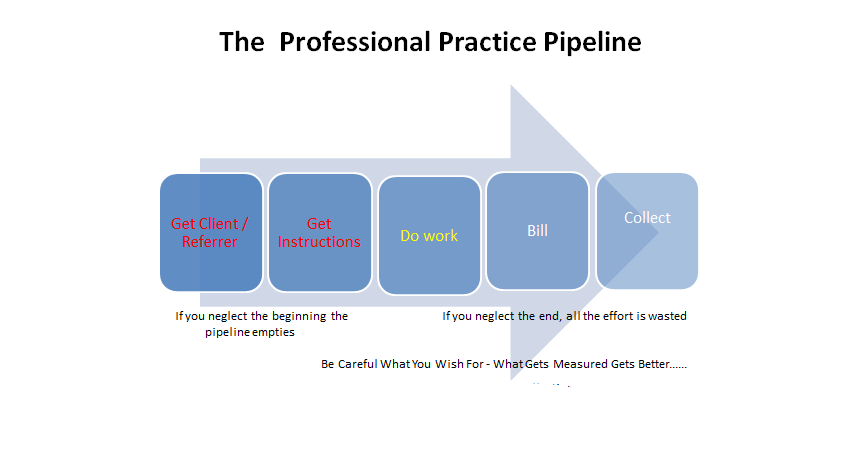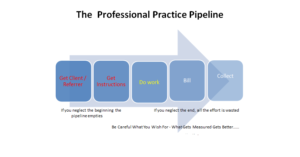Cash flow forecasts fall into two parts-inflows and outflows. Except in situations where the fee earners are remunerated on an Eat What You Kill basis, the inflows and outflows are subject to separate influences, so they can be forecasted independently.
To a large extent the cash outflows are fixed-either in value or timing or both. Most payments follow a predictable cycle-Daily Weekly Monthly Quarterly or Annually
For example
- Payroll and associated costs are monthly
- VAT is paid quarterly
- Partner taxation is paid half yearly
- Bonuses may be paid annually
It is important to understand that working through the expenses part of the profit and loss account will miss many of the significant payments. For example, VAT does not appear in the profit and loss account, loan repayments and financing are balance sheet transactions.
We have found over the years that most payments will fall under one of three headings
- There are payments which are fixed in time and value which are normally direct debits or standing orders. It’s important to identify these because unless something is done to make a change, the money will leave our bank account. Many of these are also very difficult to negotiate variation to. In the profit and loss account these will include items such as rent rates, insurance, IT contracts and possibly library subscriptions.
- There are payments which are fixed in time, subject to some variation but largely predictable. These include payroll – salary and at a different time PAYE and national insurance contributions, VAT (predictable based on turnover) and business taxation (predictable based on profits). All of these have clear due dates and the broad scale of the expenditure will be known even if the exact detail is not. For example, the normal value of the payroll will be subject to variation for overtime or bonus payments or sickness.
- Disbursements have to be paid in accordance with the Solicitors Accounts Rules. They are not predictable but, in most circumstances, they are only payable once the cash is received as part of the inflows.
Taken together these three categories of expenditure normally account for well over 90% of the firm’s outgoings.
In most circumstances (other than when there is very little headroom) it is then possible to do a contingency allowance for the other sundry expenditure.
In the first instance this should give a sufficient level of accuracy to allow a useful forecast to be prepared.
If the situation is more difficult, more precision will be needed in estimating the values to ensure that there is sufficient headroom or that the early warning is used to generate evasive action
In cash flow forecasting-it should always be easier to estimate the outflows in the inflows




